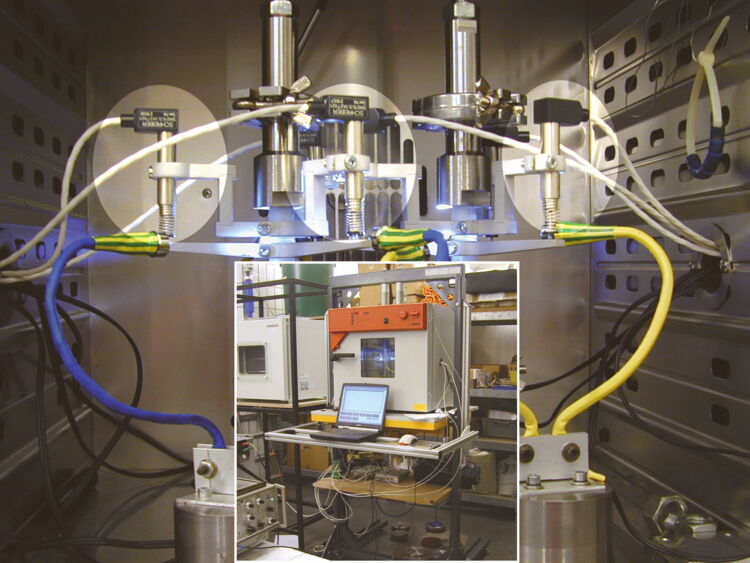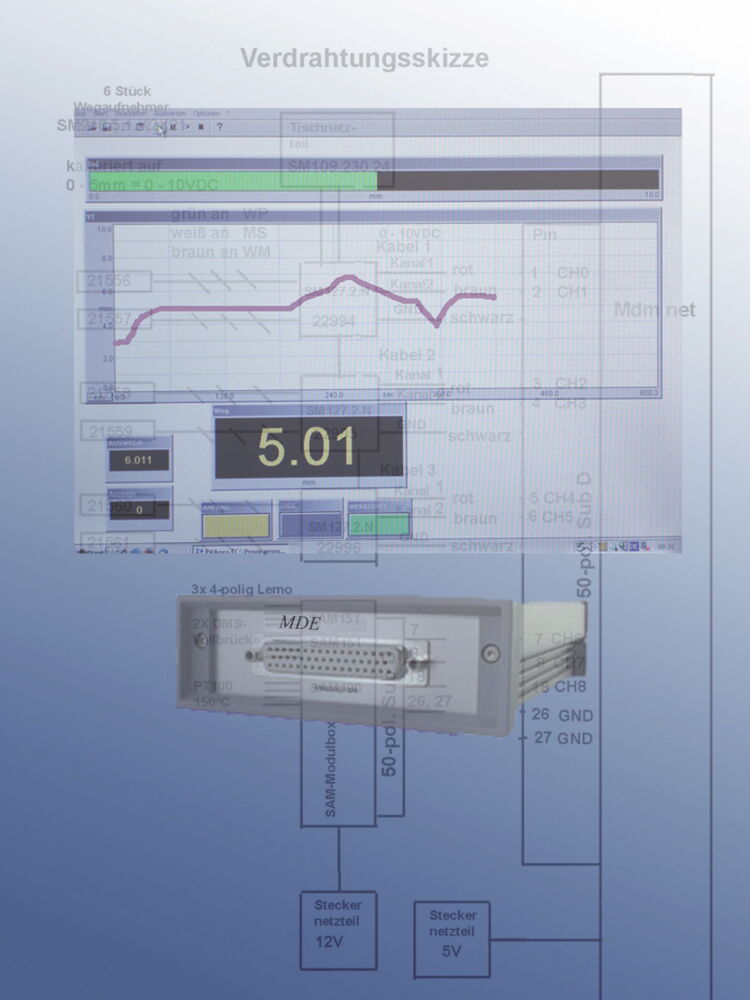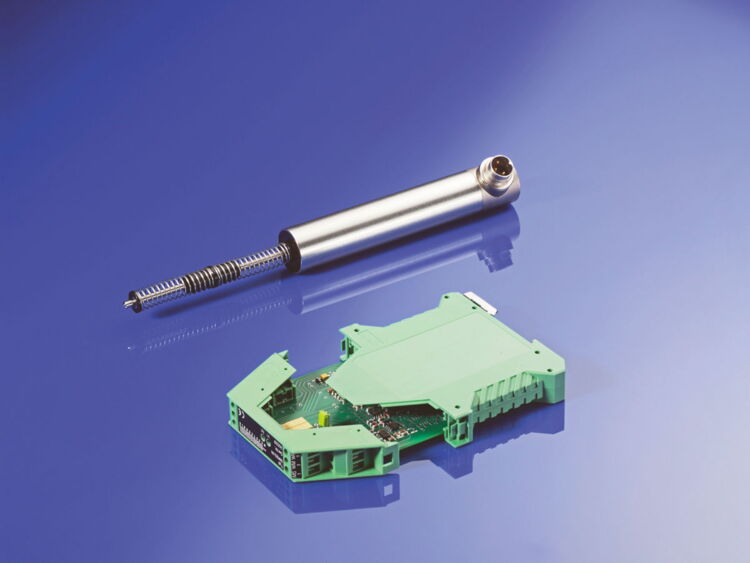
WAY-WATCHERS in the climate cabinet
Long-term monitoring of the expansion of samples in the climate test bench requires slim displacement sensors for large temperature ranges.
The inductive displacement sensors and precision gauges record strokes of up to ± 7.5 mm with resolutions in the µm range. With the precison gauges the plunger is pressed into the idle position by a spring. The measuring tips (DIN 878 M2.5) and the springs can be replaced for different measuring tasks.
The robust, cast design of the gauges and the displacement sensors also make use under difficult environmental conditions possible.
With the described application, the sensors are used in a climate test bench for monitoring the expansion of plastic samples.
This application requires a displacement sensor which operates within the temperature range of -40°C to + 125°C with high humidity, even to the extent of drop formation, and is wear-free.
The inductive sensors in the SM21 model series can fulfil these requirements. Because of the modular design, the standard displacement sensor must be set up with appropriate components such as cast mass that is suitable for high temperatures and special Teflon connecting cables for this task.

For feeding and signal preparation, modular carrier frequency amplifiers have been developed for one of two channels. They contain a stabilised carrier frequency oscillator, a phase-dependent demodulator and the signal preparation. In this way, output signals of ± 10 VDC, 0 ... 10 VDC or 0 (4) ... 20 mA are possible. The zero point and the amplification can be adjusted using trim potentiometers. The SM12.N series is designed for a maximum of 2 channels, and is installed in standard rail housings.
The 8 displacement measurements and other temperature and DMS signals are recorded in an MDE measurement data recording module. Communication with the PC takes place via the Ethernet interface, meaning that this PC can be converted into a measuring computer. Eight voltage signals are digitalised in the MDE8971 module, and an analogue output signal is generated. The resolution of the analogue signals is 16 bits. 8 more digital signal lines are configured as 4 static input and output lines. Another digital input is connected to a counter by means of level adaptation, and can be used to measure the signal frequency.

Metrological procedures can be programmed using the EVApro program (record, process and display). EVApro provides various graphical elements for displaying measurements and controlling procedural functions. The programming of the actual procedure takes place using an integrated editor.
The long-term behaviour of the distance, temperature and DMS signals is recorded in this application and stored on the hard drive of the PCs.
EVApro provides a flexible driver concept for analogue and digital data recording. A maximum of 4 hardware drivers can be addressed at the same time. Each driver manages up to 4 measuring cards.
Drivers are available for many measuring cards and measuring modules.
EVApro manages the graphical elements, the procedures, the measuring cycle and the logged-in hardware for solving the respective task in "Projects". However, it is possible to load an individual graphical configuration or procedure and use it for another project.
All measuring data is managed by EVApro in registers Reg0-Reg7 and variables. The number of variables can be freely defined between 8 and 128. An adjustable data field with a maximum of 128 channels and a channel length of 100,000 measurements is available for the further processing of data sequences.
Printouts can be generated on the standard printer using freely creatable templates for documenting the measuring data from a program sequence.
The import function makes it possible to read stored data into the data field. An evaluation function makes displaying in an XY diagram possible.
The PROJEKTINFO input element makes it possible to enter project data for a sequence controller. This data can be stored together with the data in the data file for documentation purposes. It can also be imported directly into a print template. Convenient commands are available for linearising temperatures. A comprehensive range of mathematical and logical functions make the calculation and control of measuring tasks possible. The measuring data can be stored in ASCII format.

